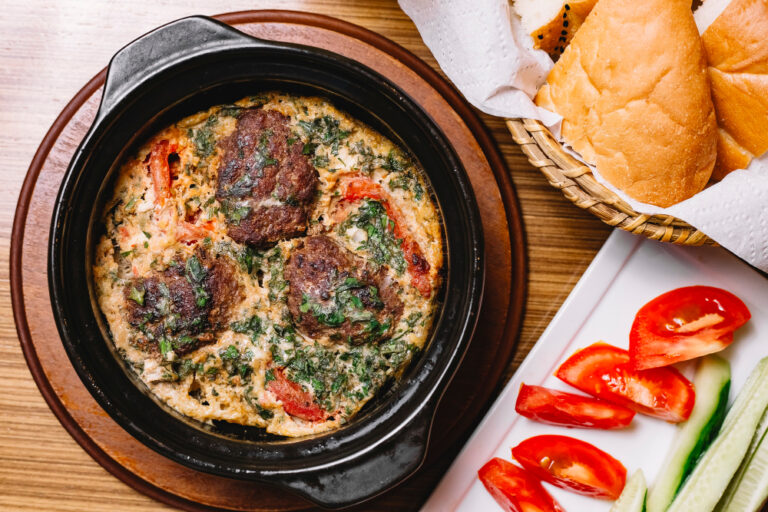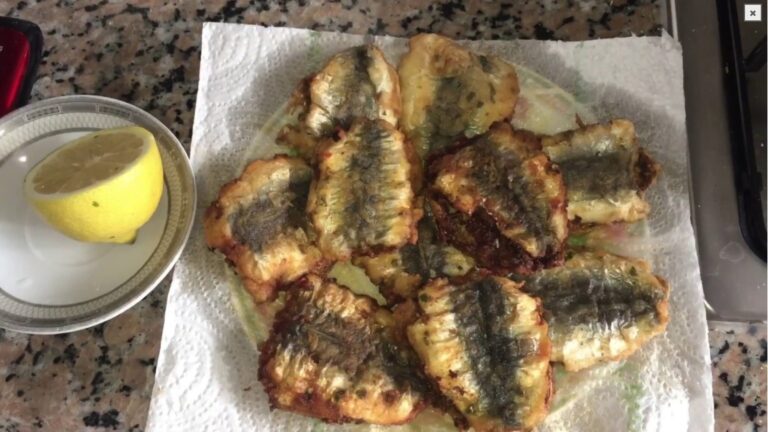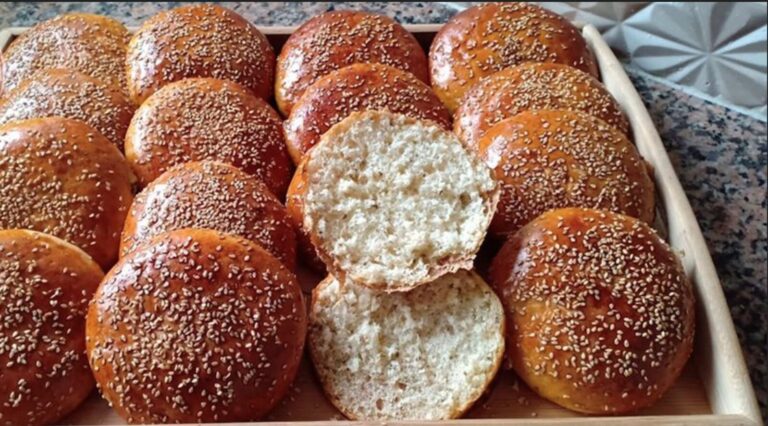
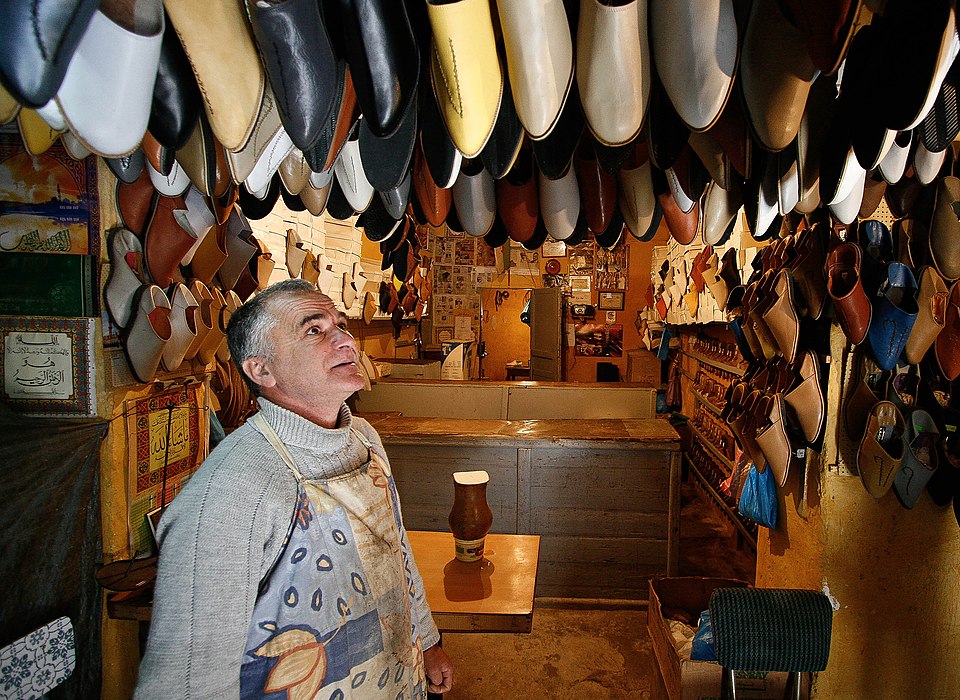
Few items capture the spirit of Morocco as gracefully as the Babouche Marocaine — the soft, pointed slippers seen in souks, riads, and homes across the country. Whether made from smooth leather in Marrakech, vibrant suede in Fes, or embroidered silk in Tétouan, these shoes carry centuries of tradition and artistry in every stitch.
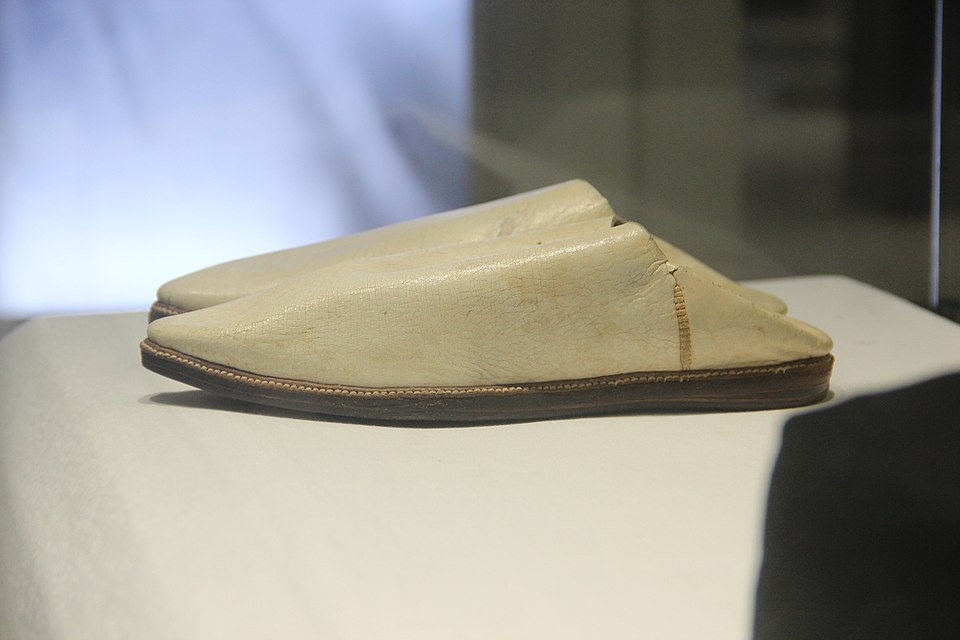
More than just footwear, the Babouche Marocaine represents a way of life — one rooted in elegance, craftsmanship, and comfort. In this article, we’ll explore the origins of these iconic slippers, where to find the best pairs, and how they’ve become a symbol of Moroccan identity that bridges past and present.
The Origins and Legacy of Babouche Marocaine
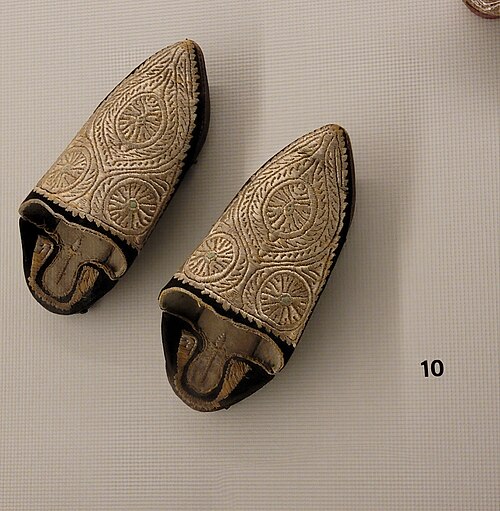
The Babouche Marocaine, also known as belgha in Arabic, has deep historical roots in Moroccan culture. For centuries, artisans have crafted these soft slippers by hand, using techniques passed down through generations. The word babouche itself comes from Persian and entered French through Ottoman influences — a reminder of Morocco’s place along ancient trade routes connecting Africa, Europe, and the Middle East.
Traditionally, the Babouche Marocaine was more than a shoe — it was a marker of identity and social status. Men wore pointed yellow leather babouches to Friday prayers and special occasions, while women’s versions came in a dazzling range of colors and designs, often embellished with embroidery or beads.
Each region in Morocco adds its own artistic flair:
- Fes is known for fine leather craftsmanship and soft, curved designs.
- Marrakech creates bold, colorful slippers for both men and women.
- Tafraoute and Tiznit add Amazigh (Berber) influences with geometric patterns and bright stitching.
These slippers have stood the test of time, symbolizing not only Moroccan fashion but also its enduring connection between beauty, practicality, and tradition.
Where to Experience Babouche Marocaine Craftsmanship
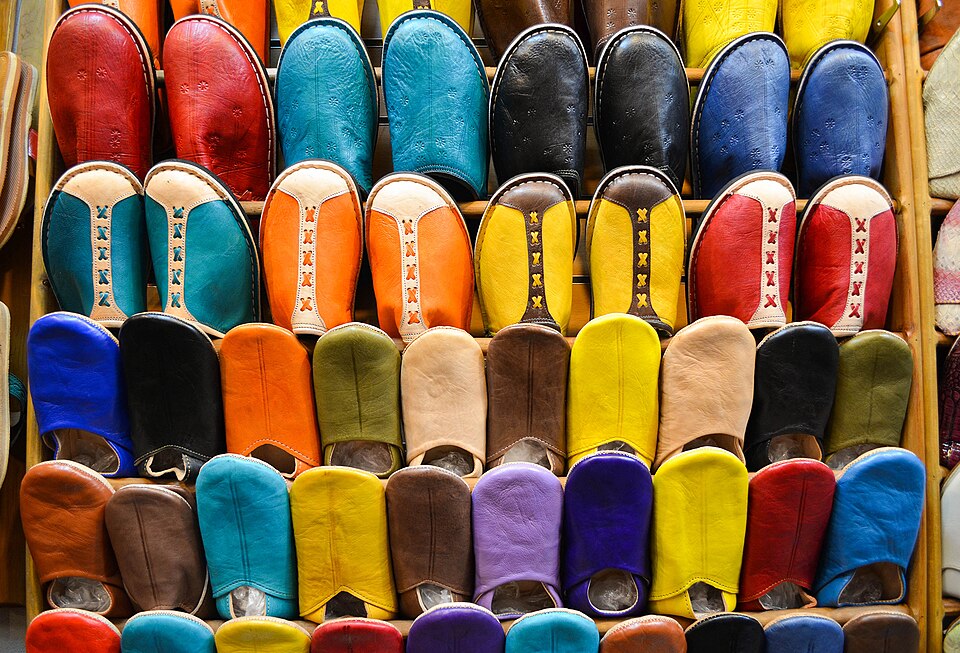
1. The Souks of Marrakech
The bustling souks of Marrakech are perhaps the best place to witness babouche-making in action. In the Souk Smata, near Jemaa el-Fnaa, artisans sit surrounded by piles of colorful slippers — red, blue, gold, and every shade in between. The smell of tanned leather mixes with the sound of hammering and laughter as craftsmen cut, sew, and finish each pair by hand.
2. Fes – The City of Leather
In Fes, the art of leatherworking dates back more than a thousand years. The famous Chouara Tannery still produces the softest leather used for traditional babouches. Visitors can watch the entire process — from dyeing hides in natural colors to crafting the finished slippers sold throughout the medina.
3. Chefchaouen and the Rif Mountains
In the Blue City, you’ll find small workshops selling babouches in cooler hues — soft blues, whites, and grays — perfectly matching Chefchaouen’s charm. Many artisans here blend Moroccan and Andalusian influences, producing unique designs ideal for modern travelers seeking authenticity.
4. Artisan Cooperatives
Across Morocco, especially in rural Amazigh areas, cooperatives help preserve this heritage while empowering local women artisans. Buying from these workshops supports sustainable craftsmanship and ensures fair wages for traditional makers.
Travel Tips and Cultural Insights
How to Choose the Perfect Pair
When buying a Babouche Marocaine, look for genuine leather — it should feel soft, smell natural, and mold comfortably to your feet. Handmade pairs may have tiny imperfections — these are signs of authenticity, not flaws.
- For Men: Pointed yellow leather slippers remain the classic choice, symbolizing tradition and elegance.
- For Women: Embroidered, sequined, or colorful suede babouches make stunning souvenirs or gifts.
Price and Bargaining
Prices vary depending on quality and craftsmanship. In Marrakech or Fes, expect to pay between 100–400 MAD for a good handmade pair. Bargaining is part of the fun — approach it with a smile and respect for the artisan’s work.
Cultural Etiquette
In Morocco, babouches are often worn indoors as a sign of cleanliness and hospitality. When visiting a home or a riad, it’s common to remove outdoor shoes and slip into soft babouches offered by the host — a gesture of comfort and welcome.
Traveler Stories – Walking Through Moroccan Heritage
For many visitors, their first pair of Babouche Marocaine becomes a cherished memory.
“I bought my babouches in a tiny shop in Fes,” recalls one traveler. “The artisan told me his family had been making them for five generations. Every time I wear them at home, I feel a little piece of Morocco beneath my feet.”
Another traveler describes walking through the blue alleys of Chefchaouen in bright red babouches — their vibrant color contrasting perfectly with the city’s calming tones.
These stories show that the babouche isn’t just a souvenir — it’s a story, a connection, and a living piece of Moroccan art.
Future of the Babouche Marocaine – Tradition Meets Modern Design
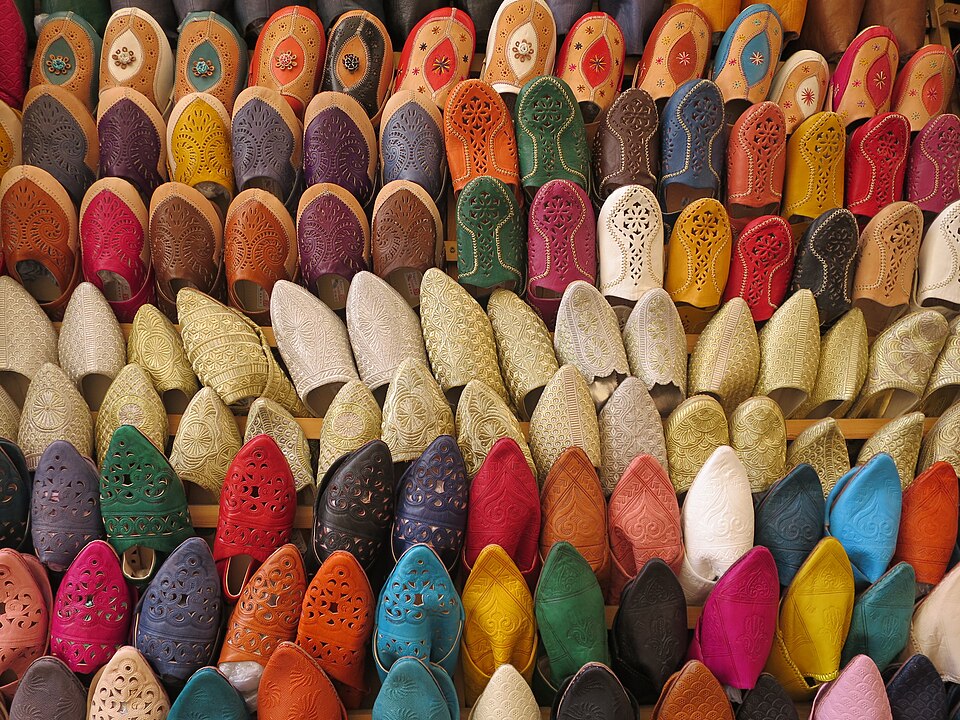
In recent years, the Babouche Marocaine has captured the attention of international fashion designers. Modern versions now appear on runways in Paris, Milan, and New York — blending traditional Moroccan designs with contemporary flair.
Yet, even as the babouche evolves, its heart remains in the Moroccan medina. Artisans continue to make each pair by hand, honoring old methods while experimenting with eco-friendly materials and modern colors.
Many young Moroccan designers are now reimagining the babouche for global audiences — turning it into a symbol of sustainable fashion and cultural pride.
If you’re visiting Morocco soon, consider buying directly from local artisans or cooperatives. Not only will you bring home a beautiful, authentic souvenir — you’ll help preserve a living tradition that’s as vibrant as ever.
FAQ – Babouche Marocaine
1. What is a Babouche Marocaine?
It’s a traditional Moroccan slipper made by hand from leather or suede, often with pointed toes. It’s known for comfort, elegance, and deep cultural symbolism.
2. Where can I buy authentic babouches?
You can find authentic babouches in Morocco’s main medinas — especially in Marrakech, Fes, and Chefchaouen — or at artisan cooperatives supporting local makers.
3. Are babouches comfortable for daily wear?
Yes! Babouches are extremely soft and comfortable, especially after a few wears when the leather molds to your feet. They’re great for indoor or light outdoor use.
4. How do I care for leather babouches?
Keep them dry, wipe gently with a damp cloth, and store them away from direct sunlight. Avoid soaking or heavy use on rough ground.
5. Can men and women both wear them?
Absolutely. Both men and women wear babouches, though designs, colors, and embroidery differ slightly according to region and tradition.
Conclusion – A Step Into Moroccan Soul
The Babouche Marocaine is more than a piece of footwear — it’s a living symbol of Morocco’s artistic heart. Each pair tells a story of heritage, craftsmanship, and timeless elegance. From the tannery in Fes to the souks of Marrakech, every step taken in these slippers connects you to the rhythms of Moroccan life.
So next time you wander through a Moroccan market and catch the warm scent of leather, pause — and let your feet guide you toward a pair of babouches. They’re not just shoes — they’re history, comfort, and culture wrapped in one soft step.
–Plan your Moroccan adventure today — and walk home with the art of Morocco at your feet.

